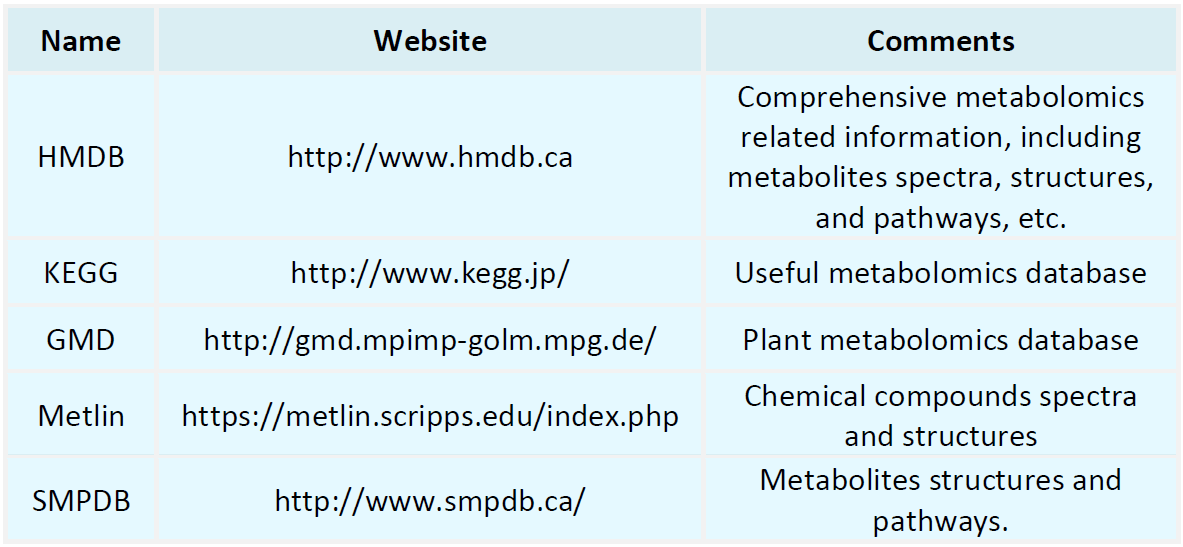Resources
Proteomics Databases

Metabolomics Databases

-
• High-Throughput Protein Identification: Technological Breakthroughs and Applications
Proteins, as the primary functional molecules in organisms, play a crucial role in various biological activities within cells. With the rapid advancement of biotechnology, proteomics has become one of the key fields for studying life phenomena. In particular, the progress of high-throughput protein identification technology has made comprehensive protein analysis possible. High-throughput protein identification technology not only greatly enhances identification efficiency but also expands its potenti......
-
• Avoid Inconsistent Data With These Expert-Approved Proteomics Techniques
The consistency of proteomics data is a crucial determinant of experimental reproducibility and the reliability of biological interpretations. However, due to sample complexity, experimental variability, and inconsistencies in data processing, proteomics analysis often suffer from substantial fluctuations. To enhance data consistency and reliability, researchers must implement systematic improvements across multiple stages, including sample preparation, experimental workflow optimization, mass spectro......
-
Importance of Protein Identification Accuracy Protein identification is a fundamental process in life science research, and its accuracy has a direct impact on biomedical research, disease diagnosis, and drug development. Proteins carry out diverse biological functions within cells, and their precise identification—both in terms of type and structure—is essential for understanding biological processes. However, multiple factors influence the accuracy of protein identification, including sample preparation..
-
• The Ultimate Guide to Mass Spectrometry in Proteomics: Maximize Data Quality
Mass spectrometry in proteomics is crucial in modern biomedical research and is widely used in protein identification, quantitative analysis, functional studies, and disease diagnosis. By leveraging mass spectrometry, researchers can precisely elucidate protein structures and functions, advancing biological research. However, the vast and intricate nature of mass spectrometry datasets poses significant challenges for accurate and efficient interpretation. This guide aims to equip researchers with effe......
-
• Proteomics Analysis: 12 Key Mistakes to Avoid for Accurate Results
Proteomics analysis involves the identification, quantification, and characterization of post-translational modifications in proteins. Despite substantial advancements in high-resolution mass spectrometry and bioinformatics tools, mistakes in experimental workflows remain a critical factor affecting data reliability. This review highlights 12 common pitfalls in proteomics analysis and presents corresponding strategies to improve experimental accuracy and reproducibility. Mistakes in the Sample Prepa......
-
• 7 Proven Ways to Enhance Protein Identification Accuracy
Protein identification is a key step in proteomics research, determining the accuracy and reliability of analysis results. Accurate protein identification not only helps deepen the understanding of biological processes but also provides scientific evidence for disease research and drug development. However, due to factors like sample complexity, sample loss during processing, and the precision of mass spectrometry techniques, identification results may have uncertainties. Therefore, laboratories often......
-
• How to Optimize Proteomics Workflows for Faster and More Accurate Results
Proteomics analysis is a tool for studying the composition, expression levels, interactions, and dynamic changes of all proteins within biological systems. With the deepening of life science research, its applications in disease diagnosis, drug development, and personalized medicine are increasingly widespread. However, due to the complexity of proteins and the challenges in data analysis, optimizing workflows to enhance sensitivity, specificity, and speed in obtaining accurate results has become a pr......
-
• Applications and Current Status of Native Mass Spectrometry in Biomolecule Research
Native mass spectrometry analysis, a powerful technique for directly analyzing intact biomolecules, has found extensive applications in structural biology, proteomics, interaction network analysis, and biopharmaceutical research. Unlike traditional enzymatic digestion-based mass spectrometry, this method enables the direct detection of biomolecules in their native states, including proteins, protein complexes, nucleic acids, and their interactions. Native mass spectrometry analysis offers unique insig......
-
• Proteomics: Key Steps, Tools, and Best Practices
Proteomics is the scientific field that studies the composition, structure, function, and interactions of proteins within living organisms. By comprehensively analyzing the proteome, researchers can gain in-depth insights into the dynamic changes in biological systems, providing crucial information for disease research, drug development, and biomarker discovery. Proteomics not only helps understand the end products of gene expression but also reveals disease mechanisms, advancing the development of.........
-
Membrane protein analysis is a specialized area within proteomics that focuses on the investigation of proteins embedded in or associated with the cell membrane. These proteins are integral to essential biological functions, serving as receptors in signaling pathways, ion channels, transporters, and components of intercellular junctions. Given the structural complexity and dynamic nature of membrane proteins, comprehensive analysis poses significant challenges. Such analyses are crucial not only for e......
How to order?







